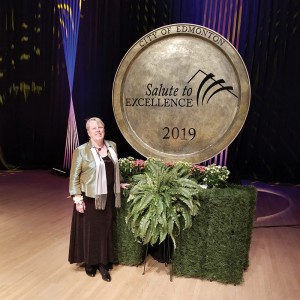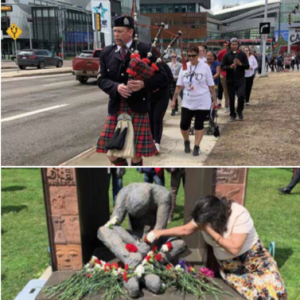St. Barbara’s Russian Orthodox Cathedral

The impressive domed building on 96 Street just south of Jasper Avenue is called St. Barbara’s Russian Orthodox Cathedral.
St. Barbara’s is one of the 25 parishes of the Moscow Patriarchate in Canada. The others are located in Regina, Ottawa, and Toronto, and in 21 rural areas of Alberta and Saskatchewan. St. Barbara’s is also the oldest church congregation on 96 Street, thus making it the very beginning of Church Street both in location and vintage.
Father Igor Kisil is the rector of St. Barbara’s and the dean of the patriarchal parishes in Alberta and Saskatchewan. Father Igor has several assistants, including Father John Grigaitis, who provided this writer with an interview and tour.
St. Barbara’s has about 250 church members. Many recent immigrants attend the weekly services (called liturgies), in part because the liturgy is conducted in a combination of English and Russian, and the church bulletin is published in English and Russian. However, a number of the worshipers are second, third and even fourth-generation Canadians – the unifying factor is the Orthodox faith.
The cathedral’s activities include a summer Bible camp at Pigeon Lake and meals served in the basement on major feast days and as a component of special events.
Like most churches, St. Barbara’s depends on donations from congregation for the bulk of its operating costs. Father John says members tend to say, “Our donation is very little compared to what we are receiving.”
Architecture
The cathedral is in the shape of a cross, with many cupolas (or domes) on its roof. The inside features a very ornate altar with a specially constructed screen where sacred icons are hung.
History
Arriving by way of Alaska, the first Russian Orthodox missionaries came to Edmonton in 1897. The first Russian Orthodox liturgy in the region took place 122 years ago, at Wostok, 50 miles northeast of Edmonton. The worshipers were immigrants from Bukovina and Galicia (Ukraine), then part of Austro-Hungarian Empire.
In later years, the many Ukrainian settlers who attended St. Barbara’s would be joined by refugees from the Bolshevik Revolution in Russia in 1917, refugees from Eastern Europe after the Second World War, and immigrants from Slavic countries after the collapse of the USSR.
The first St. Barbara’s liturgies were held in 1902 in a small frame house located where the cathedral now stands. A wooden church was built in 1908, and the current cathedral was completed in 1958.
Anita Jenkins is a retired writer and editor who lives in Boyle Street.








